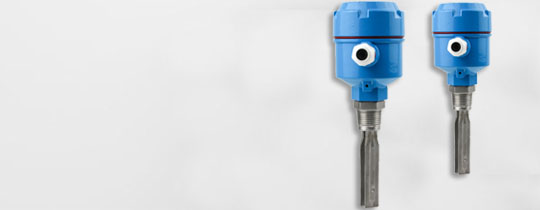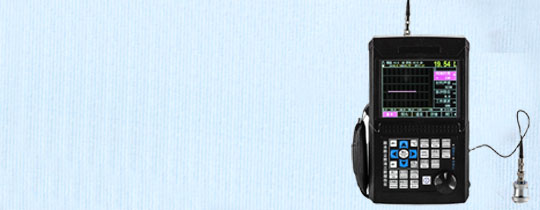
Customizable xsl/18BLEAL2 waterproof proximity switch
Customizable xsl/18BLEAL2 waterproof proximity switch means it is induced by a magnet. This "magnet" refers to a magnet, and there are several types of magnets available in the market, including rubber magnets, permanent magnet ferrite, sintered neodymium iron boron, etc.
- ZHUOXIN
- 24v-110v-220v-380v
- IP65
- TT, Paypal, Credit card, Western union
- +86-15163766288
- Customizable xsl/18BLEAL2 waterproof proximity switch means it is induced by a magnet. This "magnet" refers to a magnet, and there are several types of magnets available in the market, including rubber magnets, permanent magnet ferrite, sintered neodymium iron boron, etc.
Description

Shandong Zhuoxin Machinery Co., Ltd. can customize xsl/18BLEAL2 waterproof proximity switches. The switch is a reed switch. Dry reed tube, abbreviated as dry tongue reed tube, is a passive electronic switching element with contacts. It has a simple structure and small volume, making it easy to control and other points. Its outer shell is usually a sealed glass tube, which contains two iron elastic sheet metal plates and is also filled with inertia. Normally, the two pieces made of material in a glass tube are separated. When a magnetic substance approaches a glass tube, under the action of magnetic field lines, the two pieces inside the tube are magnetized and attracted to each other, causing the pieces to come together and connect the circuit connected to the node. After the external magnetic force disappears, the two pieces separate due to their own elasticity, and the circuit is also disconnected. Therefore, as a circuit switching device controlled by magnetic field signals, reed switches can be used as sensors for counting, limiting, and so on (mainly used in the production of door and window magnets), and are also widely used in various communication devices. In practical applications, permanent magnets are usually used to control the connection of these two metal sheets, so they are also known as "magnetrons". Feature 1: It can be used for multi-point control, saving costs, and is easy to install. 2. Contact capacity 50W/250VAC SPST or 30W/200VC SPT. 3. There are S, GL, CR classification, and Ex. 4. Junction box, available in plastic, aluminum alloy, stainless steel, IP-65 or above. 5. PP and PVF materials are suitable for strong acid and alkali environments; SUS 304/316 metal material is suitable for warm pressing barrel grooves. 6. The connecting flange has JIS, IN, and ANSI specifications; Teeth come in NPT, BSP, and other specifications. For different materials of detection bodies and detection distances, different types of proximity switches should be selected to achieve better performance in the system. Therefore, the following principles should be followed in selection: 1.1. When the detection body is made of metal materials, frequency oscillation type proximity switches should be selected, which are sensitive to detection of iron nickel and A3 steel. The sensitivity of aluminum, brass, and stainless steel detection bodies is high. 1.2. When the detection body is made of non-metallic materials, such as; Capacitive proximity switches should be used for materials such as wood, paper, plastic, glass, and water. 1.3. When metal and non-metal materials need to be detected and controlled remotely, photoelectric proximity switches or type proximity switches should be selected. 1.4. When the detection body is metal, if the detection sensitivity is required from time to time, magnetic proximity switches or Hall type proximity switches can be selected& nbsp; [2] Technical indicator detection 2.1. Action distance measurement; When the action piece approaches the sensing surface of the proximity switch from the front, the distance of the proximity switch action should be the distance of the proximity switch action, and the measured data should be within the product's parameter range. 2.2. Determination of release distance; When the action piece moves away from the sensing surface of the proximity switch from the front, and the switch switches from action to release, measure the distance between the action piece and the sensing surface. 2.3. Determination of return error H; The difference between the action distance and the release distance. 2.4. Measurement of action frequency; Use a speed regulating motor to drive a rubber disc, fix several steel plates on the disc, adjust the distance between the switch sensing surface and the action plate to about 80 times the switch action distance, rotate the disc, and sequentially make the action plate close to the switch. A speed measuring device is installed on the disc spindle, and the switch output signal is connected to the digital frequency meter. At this point, start the motor and gradually increase the speed. Under the condition that the product of the speed and the action piece is equal to the frequency count, the action frequency of the switch can be directly read out by the frequency meter. 2.5. Determination of repeatability; Fix the action piece on the quantity, and control the movement speed at 0.1mm/s from the front of the switch sensing surface close to the action area of the switch, beyond the switch action distance of 120. When the switch is activated, read the reading on the quantity and then exit the action area to disconnect the switch. Repeat this process 10 times and calculate the sum of the 10 measured values. Product model S-FJK-LXJ-JP-AHBC feedback switch S-FJK-LXJ-JP-AHBC feedback switch& nbsp; Runaway switch SZL-VL-S-F tear switch SZL-VL-S-G acousto-optic switch FM-116F 220V underspeed switch GSC10NG1RL-510-M travel switch NG RL, Extended Roller Plunger NG2RL-510L060 Travel Switch NG RL, Extended roller plunger, SR6 circular connector
NG1RS-510L060-M travel switch NG RS, Steel roller
NG1RS-510-M travel switch NG RS, Steel roller
NG2RS-510 travel switch NG RS, Steel roller, SR6 circular connector
NG1RS-510L060-M travel switch NG RS, Steel roller
NG1RS-510-M travel switch NG RS, Steel roller
NG2RS-510 travel switch NG RS, Steel roller, SR6 circular connector
Tags
Get the latest price? We'll respond as soon as possible(within 12 hours)

















